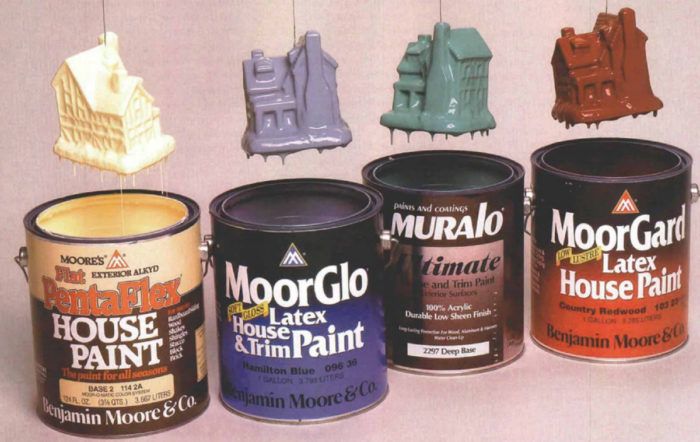Has Latex Won the Paint Wars?
More durable and versatile than ever, water-based exterior house paints are pushing oil to the brink of extinction.

Synopsis: Water-based latex paint has all but won the war over traditional oil-based finishes, and this article will help you understand what you’re buying. Sidebars discuss solid-color stains and various paint additives that improve performance.
Sheldon Brown was one of the holdouts. If a homeowner or a weekend painter wanted to use water-based paint, fine, but no latex would taint his brushes. Or so he thought.
“I was one of those firm believers in oil,” says Brown, a professional painter in Woodstock, Vermont. He managed to keep latex at arm’s length for 20 years before breaking down and using it himself. Now he can’t say enough about the top-of-the-line exterior latexes. “They really have come a long way. They spray better, they roll better, they cleanup better, and they hold their color better. I haven’t painted a whole exterior in oil for four or five years now.”
More than 80% of exterior house paint sold in the United States is latex, according to the National Paint and Coatings Association. But many professional painting contractors, a sometimes stubborn and finicky lot, long held that oil-based paint performed better—or at least looked better—than latex.
Now even diehards like Brown have come around. Latex paints have overcome their biggest problems—poor adhesion, hiding ability, flow, and leveling—since they came out in the 1950s. Now manufacturers are chasing new milestones in latex: low-temperature formulas, coatings that can stretch and bridge gaps in masonry, and resins that stick to poorly prepped or chalky surfaces.” Latex has finally made it,” Brown says.
Why water is sinking oil
If latex is winning, oil is losing, and not just in market share. New environmental regulations going into effect this year are forcing manufacturers to reformulate their products with fewer VOCs, the volatile organic compounds found in mineral spirits and other petroleum-based solvents, which are key ingredients in oil-based paint. Although solvent-borne coatings will not be banned, at least immediately, they will be more expensive and harder to find.
“There is a segment (of professional painting contractors) who want solvent-borne paints, so we are developing these products with lower VOCs to meet the regulations,” says Lane Blackburn, vice president of marketing for Sherwin-Williams, the country’s largest paint manufacturer. “The primary effort, however, is going into latex.”
Consumers have been switching to latex for decades, chiefly because water-based paints are easier to use—brushes and spills can be cleaned with soap and water—and because they don’t have head-spinning and air-fouling solvents. Convenience and lack of fumes, however, were never enough to tear professionals away from proven products. To find out what has changed the minds of serious painters, you almost need to understand paint on a molecular level because oil and latex work in different ways.
For more photos and details, click the View PDF button below:
Fine Homebuilding Recommended Products
Fine Homebuilding receives a commission for items purchased through links on this site, including Amazon Associates and other affiliate advertising programs.

The New Carbon Architecture: Building to Cool the Climate

Code Check 10th Edition: An Illustrated Guide to Building a Safe House

Homebody: A Guide to Creating Spaces You Never Want to Leave


























